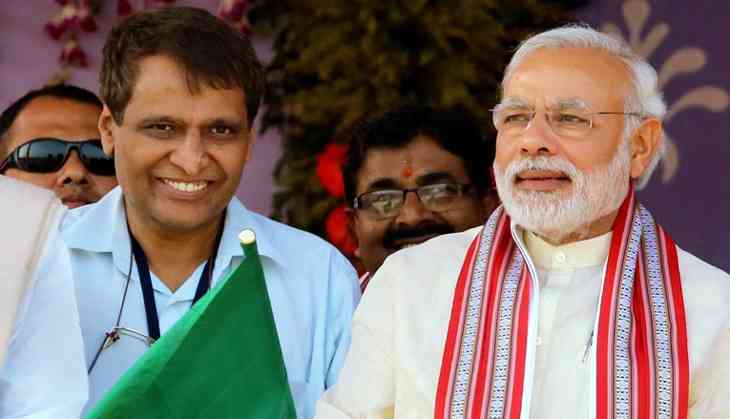Industry and Commerce Minister Suresh Prabhu said in an event that the Modi government will release the New Industrial Policy very soon. This will be the third industrial policy by the government of India; the first one was brought in 1956, a few years after independence, and the second one in 1991 on the brink of liberalization. “Through implementing the policy, we want to increase India’s share of Gross Domestic Product (GDP) from manufacturing to 20 percent to (a total GDP of) $5 trillion by 2025-2026. Currently, it is at a growth rate of 16 percent, we are very sure that we will achieve $1 trillion of GDP coming from manufacturing, $3 trillion from services and the rest from other activities. This is the potential profile of India’s GDP in the near future”, said Suresh Prabhu after inaugurating the ACMEE 2018, the 13th International Machine Tools Exhibition, organized by the AIEMA (Ambattur Industrial Estate Manufacturers Association) in Chennai.
The new industrial policy is expected to strengthen municipal bodies to set up commercially viable Micro, Small and Medium Enterprises (MSME) to recycle waste for producing energy. The policy document will promote foreign technology transfer and attract $100 billion worth of FDI per year. It will focus on promoting new sectors called Industry 4.0 which includes automation, internet of things, cloud computing and data exchange in manufacturing technologies as well as modernizing the existing industries. The focus is not just on creating jobs in manufacturing but to also create an entire ecosystem for growth.
There are several reasons as to why th Modi government is releasing a new Industrial policy. There is a need for a new industrial policy because the industrial policy of 1956 was a socialist one which aimed at import substitution and self-sufficiency. The next industrial policy was prepared on the backdrop of the balance of payments (BoP) crisis in 1991. Therefore there is a need for a comprehensive industrial policy which promotes manufacturing for domestic consumption as well as for exports. The previous industrial policies did not take the partnership of states and municipal corporations into account, because there was a Unitary bias at that time in the country and federalism was not fully developed. On state partnership, Suresh Prabhu said “The Modi government is keen to enlist the support of states like Tamil Nadu for a strong Centre-state partnership, Tamil Nadu is known to deliver good infrastructure for industries. It is already developed and we will make it more developed through our partnership. States become an important partner for implementing new initiatives and without their support, we cannot take them forward.”
The share of the manufacturing sector has been low in India since liberalization, and while the service sector grew up exponentially in post-liberalization period, the manufacturing could not pick up the pace. Countries like China whose population and size are comparable to India grow on the strong base of manufacturing. Almost all countries make the transition first from an agricultural economy to industrial economy, and then finally to a service one. But in India, we have leaped from an agricultural economy to a service economy, without a manufacturing base to provide jobs to the 1.2 crores strong workforce which India produces every year. The majority of people could not be employed in agriculture because productivity is low, while service sector is a skill intensive job. Therefore, for the sake of the economy as well as for providing an employment base to our large population, reviving and reforming the industrial sector is crucial.
